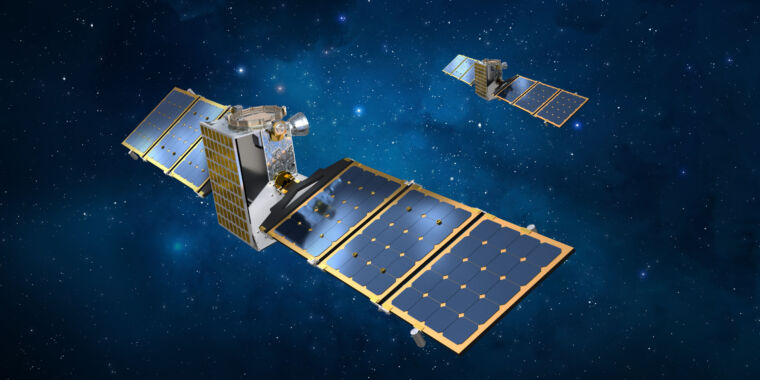
Two small spacecraft should now have been cruising through the solar system on their way to undiscovered asteroids, but after several years of development and nearly $50 million in spending, NASA announced Tuesday that the probes remain locked up in a Lockheed Martin factory in Colorado.
That’s because the mission, dubbed Janus, was set to launch last year as a piggyback payload on the same rocket carrying NASA’s much larger Psyche spacecraft, which will fly to a 140-mile-wide (225 kilometers) metal-rich asteroid — also named Psyche — for more than two years of close-up observations. Software testing problems on the Psyche spacecraft led NASA executives to delay the launch by more than a year.
An independent review committee set up to analyze the reasons for the delay in Psyche’s launch identified problems with the spacecraft’s software and weaknesses in the plan to test the software before Psyche’s launch. Digging deeper, the review panel determined that NASA’s Jet Propulsion Laboratory, which manages the Psyche mission, was hampered by staffing and personnel issues exacerbated by the COVID-19 pandemic.
Psyche is now back on track for October launch on a SpaceX Falcon Heavy rocket, but Janus will not be on board.
Janus is designed to fly to two binary asteroids – made up of two bodies that are close together – that orbit the sun closer to Earth than the metallic asteroid Psyche. While the Psyche mission can still reach its asteroid destination and complete its science mission with a launch this year, the asteroids targeted by Janus will have moved too much in the solar system since last year. They are no longer accessible to the two Janus spacecraft without flying too far from the sun for their solar arrays to generate enough power.
When it became clear that the two Janus asteroids were no longer reachable, scientists on the Janus team and NASA management agreed last year to remove the twin spacecraft from the Psyche launch. Scientists were considering other uses for the suitcase-sized Janus spacecraft, which had already been built and was weeks away from being shipped to Florida to begin final launch preparations when NASA decided to delay the launch of Psyche.
One of the ideas for repurposing the Janus spacecraft was to send the probes past asteroid Apophis, a space rock larger than the Empire State Building that will come within 20,000 miles (32,000 kilometers) of our planet’s surface by 2029. intrude. after its discovery in 2004, scientists said there was a slim chance that Apophis could hit Earth in 2029 or later this century, but astronomers have now ruled out any risk of a collision for the next 100 years.
It came down to money
Ultimately, Janus fell victim to the delay of the Psyche mission and tight budget constraints at NASA. The agency said Tuesday it has instructed the Janus team to “prepare the spacecraft for long-term storage.”
“NASA considered several potential opportunities and requirements for alternate missions using the dual spacecraft, with a primary focus on asteroid science,” Eric Ianson, deputy director of NASA’s planetary science division, said in a written response to questions from Ars. “However, resource constraints over the next several years have led to the decision not to pursue any of these alternatives at this time.”
NASA’s planetary science budget is under pressure from rising costs for several missions already on the books, including the multibillion-dollar Mars Sample Return project, which is still in its early stages of development. The sample return mission aims to retrieve rock samples from Mars and return them to Earth for analysis. The Europa Clipper mission, now undergoing final assembly for launch next year, is also facing cost increases, according to Tom Statler, an official in NASA’s planetary science department.
The debt ceiling budget deal struck last month by President Biden and congressional Republicans sets federal spending limits that are likely to affect NASA’s overall funding levels.

